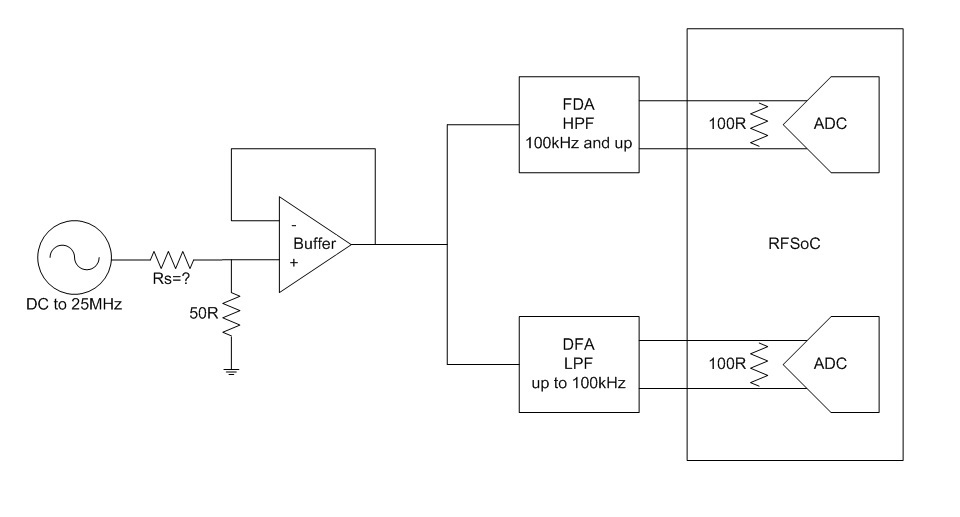Other Parts Discussed in Thread: THS4131, , THS4541, THS4551, BUF602, OPA690, OPA691, OPA820
Hey
My question is a little general but I'll give you more information if needed
I'm considering of using the THS4501 or the THS4131 as a input level for the ZCU29DR (Xilinx RFSoC),
the configuration is single ended to differential converter with a topology of 2nd order high pass filter.
the VCM of the RFSoC (for AC coupling mode0 is 1.25V
my system frequancy is up to 25MHz
is it recomended to use it in that configuration?
BR
Elhanan


